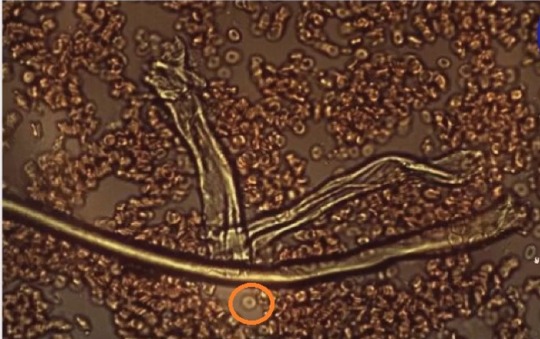#GRAPHENE
Text
Tri-layer may be better than bi-layer for manufacturing, improving the speed and capacity of electrochemical and electrocatalytic devices.
Three layers of graphene, in a twisted stack, benefit from a similar high conductivity to "magic angle" bilayer graphene but with easier manufacturing—and faster electron transfer. The finding could improve nano electrochemical devices or electrocatalysts to advance energy storage or conversion.
Graphene—a single layer of carbon atoms arranged in a hexagonal lattice—holds unique properties, including high surface area, excellent electrical conductivity, mechanical strength and flexibility, that make this 2D material a strong candidate for increasing the speed and capacity of energy storage.
Continue Reading.
76 notes
·
View notes
Text

Scientists achieve rapid upcycling of microplastics to graphene
James Cook University researchers have achieved a significant breakthrough that allows them to convert microplastics to a highly valuable material. The study is published in the journal Small Science.
JCU Professor Mohan Jacob said some plastic waste degrades into smaller fragments, often reaching micron sizes.
"These microplastics are notorious for their non-degradable and insoluble nature in water and are an evolving threat to fish and animals and humans," said Professor Jacob.
JCU's Dr. Adeel Zafar said microplastics' characteristics enable them to absorb organic pollutants.
Read more.
#Materials Science#Science#Graphene#Recycling#Plastics#Polymers#Waste#Environment#James Cook University
47 notes
·
View notes
Text
They're putting graphene in everything
150 notes
·
View notes
Text
🪤💉🪤💉🪤GRAPHENE 🪤💉🪤💉🪤
⚰️⚰️⚰️
#graphene#danger#warning#health hazards#inoculation#heath#health care#crimes against humanity#covid#jabs#say NO to 💉💉💉#fight for justice#speaktruth#standup#speak up#truth#please share#wwg1wga#corruption#worldwide
54 notes
·
View notes
Text

#science#light#technology#graphene#free energy#ascension#consciousness#energy#magic#engineering#nanotechnology#the future#quantum mechanics#quotes#alchemy#walter russell
16 notes
·
View notes
Text
Researchers make progress toward a new environmentally friendly nanomaterial that could revolutionize electronic devices
41 notes
·
View notes
Text
#graphene#Dopamine_sensor#electrochemistry#sensor#Electrochemical_sensor#Nanosensor#Biosensor#Dopamine#Voltamammetry
7 notes
·
View notes
Text
Green hydrogen successfully produced from plastic waste
Scanning electron microscope (SEM) image of layered stacks of nano-scale flash graphene sheets formed from waste plasticKevin Wyss/Tour lab
Low-emissions strategy that could pay for itself helps scientists achieve high-yield hydrogen gas and high-value graphene.
Climate change has made scientists seek renewable energy where it can be found. While manufacturing products out of waste is on the…

View On WordPress
8 notes
·
View notes
Link

#wooden bike#sustainable mobility#aerodynamic geometry#graphene#Timber Bike#Timber Mobility Project#wood#inovation#bicycles
16 notes
·
View notes
Text
“Truly Mind-Boggling” Breakthrough: Graphene Surprise Could Help Generate Hydrogen Cheaply and Sustainably
5 notes
·
View notes
Text
2 notes
·
View notes
Text
The super-special material graphene continues to surprise and fascinate scientists, this time revealing a rare electronic state termed 'ferro-valleytricity', which occurs when graphene is stacked up in a particular five-layer combination.
When in this new state, the graphene stack exhibits weird and wonderful magnetic and electronic behavior, as reported by researchers from the Massachusetts Institute of Technology (MIT), Harvard University, and the National Institute for Materials Science in Japan.
Using graphene in this way could help in the development of both classical and quantum computers, according to the team, especially in terms of creating data storage solutions that offer large capacities but that also need relatively little energy to run.
"Graphene is a fascinating material," says physicist Long Ju from MIT. "Every layer you add gives you essentially a new material."
"And now this is the first time we see ferro-valleytricity, and unconventional magnetism, in five layers of graphene. But we don't see this property in one, two, three, or four layers."
Continue Reading.
70 notes
·
View notes
Text

Researchers develop proton barrier films using pore-free graphene oxide
Kumamoto University's research team, led by Assistant Professor Kazuto Hatakeyama and Professor Shintaro Ida of Institute of Industrial Nanomaterials, has announced a groundbreaking development in hydrogen ion barrier films using graphene oxide (GO) that lacks internal pores. This innovative approach, published in Small, promises significant advancements in protective coatings for various applications.
In their study, the research team successfully synthesized and developed a thin film from a new form of graphene oxide that does not contain pores. Traditionally, GO has been known for its high ionic conductivity, which made it challenging to use as an ion barrier. However, by eliminating the internal pores, the team created a material with dramatically improved hydrogen ion barrier properties.
Read more.
20 notes
·
View notes
Text

“You can see the size of the graphene fibres in relation to the size of a red blood cell. Fibres of this size will block capillaries. You can also see the graphene fibres are hollow and contain red blood cells.”
4 notes
·
View notes
Text
graphene heating multipurpose down blanket

Wow~
As long as you need, the graphene heating multipurpose down blanket can also be a graphene heated vest!
#business#design#developers & startups#advertising#exercise#entrepreneur#fitblr#health & fitness#home & lifestyle#graphene#graphene technology#outdoors#heated blanket#camping#electric#multipurpose#multifunctional
3 notes
·
View notes